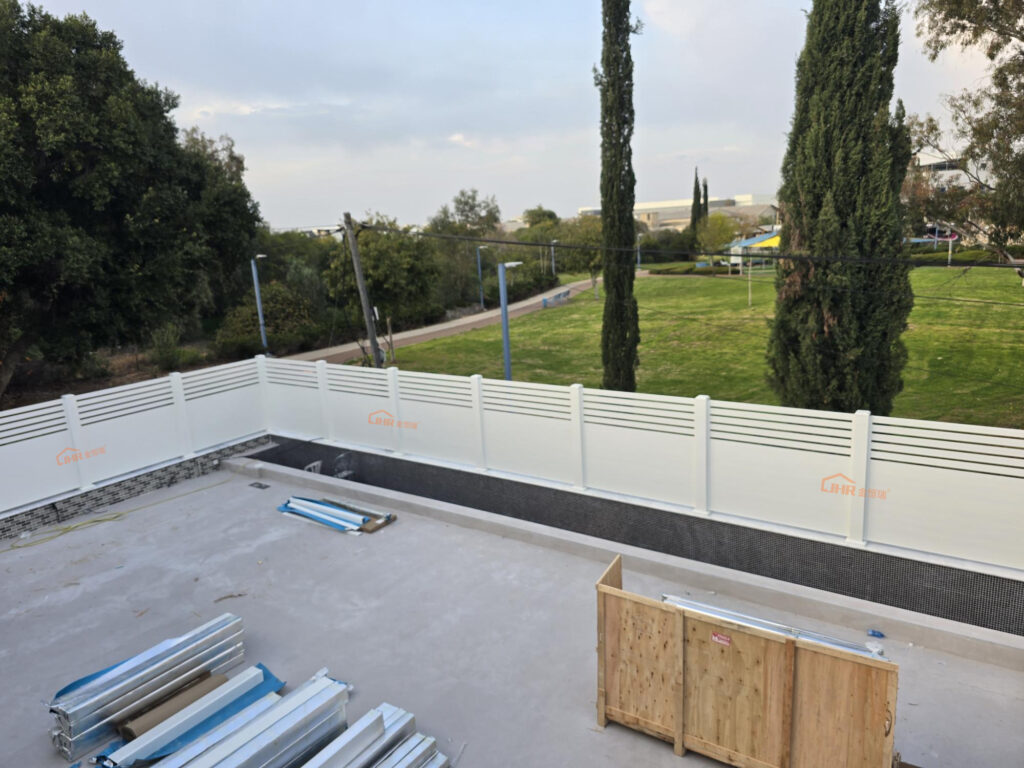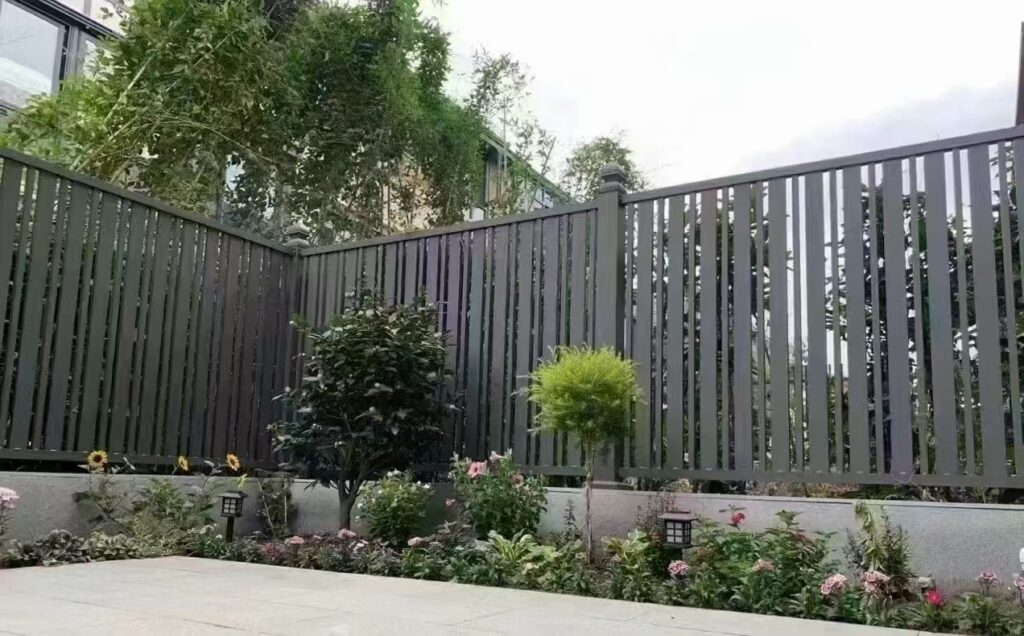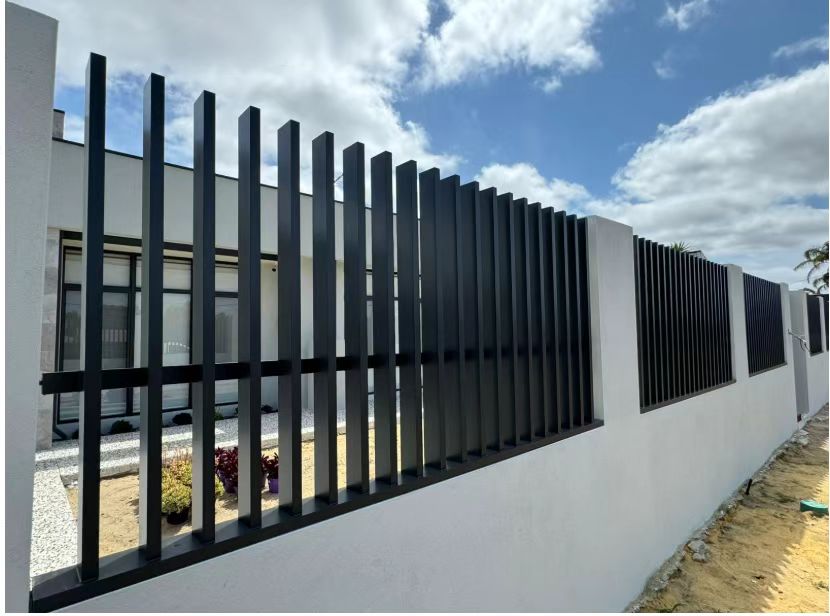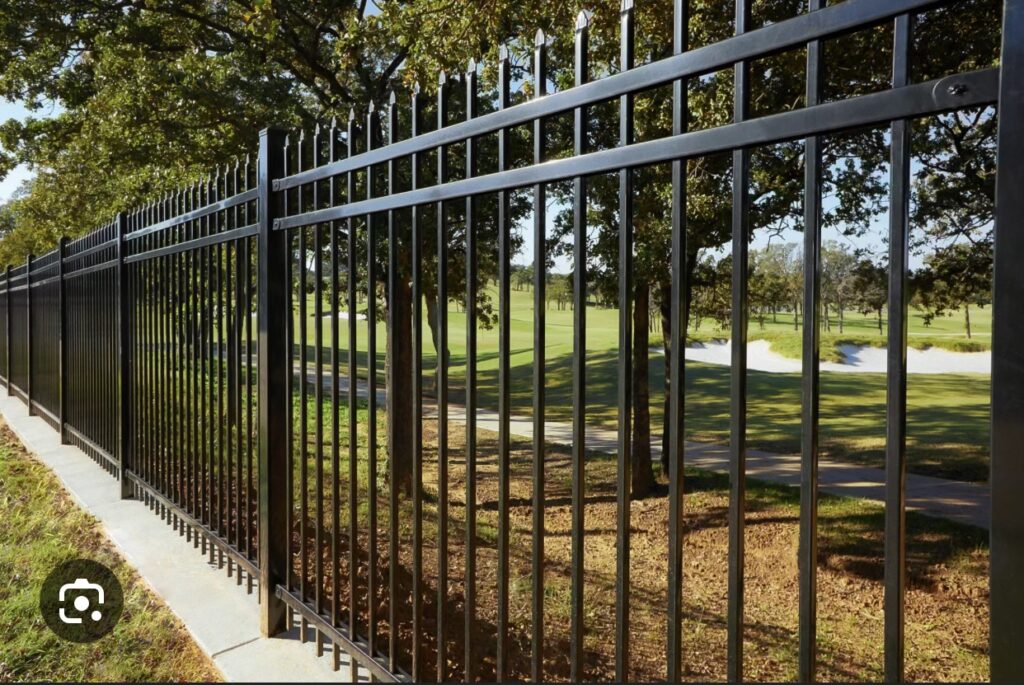The evolution of home security has shifted from reactive measures to proactive, intelligent systems that integrate physical barriers with digital technologies. Outdoor fencing, particularly aluminum alloy fences, plays a pivotal role in this transformation. This passage analysis explores the technical, functional, and strategic advantages of aluminum alloy fences in modern smart security ecosystems, detailing their material properties, integration capabilities, and future-ready scalability.
1. The Role of Fencing in Modern Home Security Systems
(1) From Passive Barriers to Active Defense
Traditional fences served as passive deterrents, relying on height and sturdiness to discourage intruders. Modern systems, however, transform fences into active components of a holistic security network. Aluminum alloy fences, with their adaptability and durability, bridge the gap between physical fortification and digital intelligence.
- Key Components of an Integrated Security Fence
Detection Layer: Sensors, cameras, and motion detectors.
Deterrence Layer: Anti-climb designs, lighting, and alarms.
Communication Layer: IoT gateways and wireless protocols.
Response Layer: Automated alerts and centralized control.
2. Aluminum Alloy Fences: Material Science and Engineering
(1) Composition and Manufacturing
Aluminum alloys used in fencing typically combine aluminum with elements like magnesium, silicon, or zinc to enhance strength and corrosion resistance. Common grade is 6063, known for their balance of malleability and structural integrity. Manufacturing processes such as extrusion allow for precise, customizable profiles while maintaining lightweight properties.
- Durability and Environmental Resistance
Corrosion Mechanisms: Aluminum’s oxide layer (Al₂O₃) forms spontaneously upon exposure to air, preventing rust. This layer self-repairs if scratched, unlike steel coatings.
Climate Adaptability:
Coastal Areas: Resists saltwater corrosion, a common issue with iron or steel.
Extreme Temperatures: Retains structural integrity from -30°C to 50°C, avoiding brittleness in cold or warping in heat.
UV Resistance: Powder-coated finishes reflect UV rays, preventing color fading.
Impact Resistance: High tensile strength (up to 310 MPa in alloy 6061) withstands forced entry attempts.

3. Smart Integration Capabilities: Building an Intelligent Perimeter
(1) Sensor Integration
Vibration Sensors: Detect attempts to cut or climb the fence. Advanced models differentiate between environmental noise (e.g., wind) and human activity using AI algorithms.
Fiber Optic Sensors: Embedding fiber-optic cables within fence posts to detect pressure changes, ideal for high-security zones.
Laser Grids: Create invisible infrared barriers between fence panels; disruptions trigger alarms.
- Surveillance and AI Analytics
Camera Systems:
Fence-Mounted Cameras: Wide-angle 4K cameras with night vision, integrated into fence posts.
AI Features: License plate recognition, loitering detection, and facial recognition synced with homeowner databases.
Edge Computing: Process data locally to reduce latency (e.g., NVIDIA Jetson modules).
Drone Integration: Fence-triggered drone patrols for real-time aerial surveillance.
- Access Control and Automation
Smart Gates:
Biometric Scanners: Fingerprint or retinal scanners embedded in gate handles.
Vehicle Recognition: RFID tags or ANPR (Automatic Number Plate Recognition) for driveway access.
IoT Protocols: Compatibility with Zigbee, Z-Wave, or Thread for seamless communication with hubs like Samsung SmartThings or Apple HomeKit.
- Wireless Connectivity and Power Solutions
Low-Power Wide-Area Networks (LPWAN): Utilize LoRaWAN or NB-IoT for long-range, low-energy sensor communication.
Solar-Powered Systems: Integrated solar panels on fence posts power cameras and sensors, reducing grid dependency.
Energy Harvesting: Kinetic energy from fence vibrations converted to electricity for minor components.
4. Security-Enhancing Design Features
(1) Anti-Climb and Tamper-Proof Engineering
Vertical Slat Design: Narrow spacing (≤4 inches) prevents footholds.
Curved or Spear-Topped Finials: Deter climbing attempts.
Smooth Surfaces: Powder-coated finishes reduce grip.
Welded Joints: Eliminate weak points compared to bolted assemblies.
(2) Dynamic Lighting Systems
Motion-Activated LEDs: Integrated into posts to illuminate intruders and alert homeowners.
Color-Changing Lights: Programmable via apps to blend with landscaping or signal emergencies (e.g., flashing red for breaches).
Dark Sky Compliance: Directional lighting minimizes light pollution.
(3) Audible and Silent Alarms
On-Site Sirens: 120-decibel alarms disorient intruders.
Stealth Alerts: Silent notifications to smartphones or security firms.
Voice Deterrents: Pre-recorded warnings (e.g., “You are being recorded”) triggered by motion.

5. Aesthetic and Functional Customization
(1) Design Flexibility
Styles: Ornamental scrolls, minimal horizontal bars, or privacy-focused solid panels.
Textures: Wood-grain embossing mimics cedar or redwood without maintenance.
Color Options: Powder-coating in 200+ RAL shades, from matte black to metallic bronze.
(2) Landscaping Integration
Climbing Plant Supports: Decorative brackets for ivy or roses, enhancing privacy.
Soundproofing: Acoustic panels reduce traffic noise in urban settings.
Gate Automation: Sliding or swinging gates with programmable schedules.
6. Sustainability and Economic Benefits
(1) Environmental Impact
Recyclability: Aluminum retains 95% of its properties after recycling, requiring 95% less energy than primary production.
Lifecycle Analysis: Compared to wood (deforestation) or steel (high carbon emissions), aluminum alloys have a 40% lower carbon footprint over 30 years.
(2) Cost Efficiency
Installation Savings: Lightweight panels reduce labor costs by 20–30% versus steel.
Long-Term ROI: Minimal maintenance and 25-year lifespan yield 50% savings over wood fences.
Insurance Discounts: Some providers offer 5–15% reductions for homes with certified smart fences.
7. Case Studies: Real-World Applications
(1) Residential Use: Smart Subdivisions
A gated community in Florida reduced break-ins by 70% after installing aluminum fences with thermal cameras and drone patrols. Homeowners access a shared app to monitor perimeter activity.
(2) Commercial Use: Data Centers
A tech campus in Sweden uses aluminum fences with fiber-optic sensors and AI analytics to protect against physical intrusions, integrating with drone-based thermal scans for 24/7 coverage.
(3) Coastal Adaptation: Hurricane-Prone Areas
In Miami, aluminum fences withstood Category 4 hurricanes, outperforming steel counterparts that corroded within five years.
8. Future Trends and Innovations
Self-Healing Coatings: Nano-materials that repair scratches autonomously.
5G and Edge AI: Real-time video analytics for crowd behavior prediction.
Blockchain Security: Encrypted logs of fence breaches stored in decentralized ledgers.
Biometric Integration: Palm-vein scanners embedded in gateposts.
9. Installation and Maintenance Guidelines
Site Preparation: Soil testing for post stability, avoiding underground utilities.
Modular Assembly: Prefabricated panels with snap-in sensors for DIY setups.
Maintenance Routines: Annual inspections of electrical components, firmware updates for AI models.

Conclusion
Aluminum alloy fences represent the convergence of material innovation and digital intelligence, offering unmatched versatility in modern home security. Their ability to integrate with AI, IoT, and renewable energy systems positions them as a cornerstone of future-safe residential and commercial infrastructures. As smart cities evolve, these fences will likely become critical nodes in urban security networks, demonstrating that robust protection need not compromise aesthetics or sustainability.

